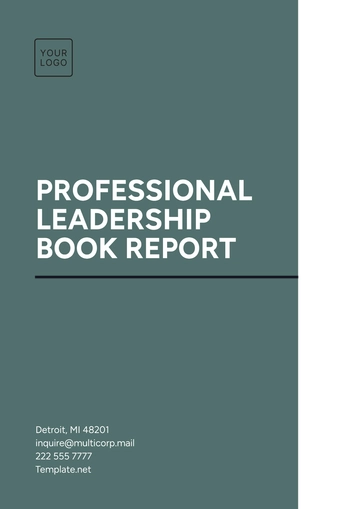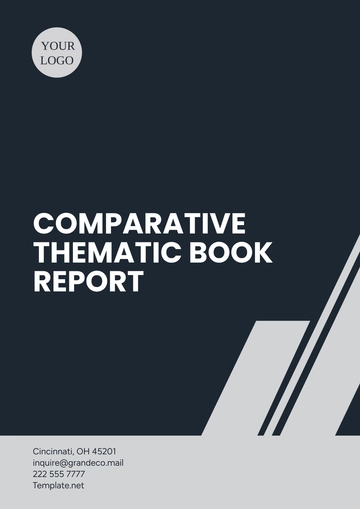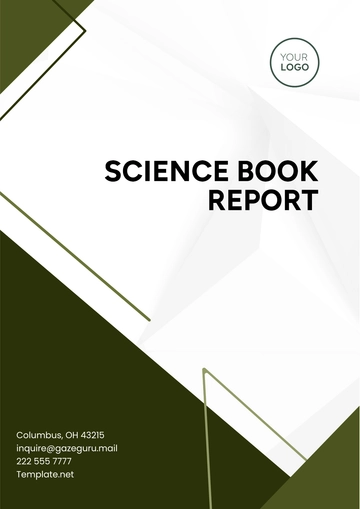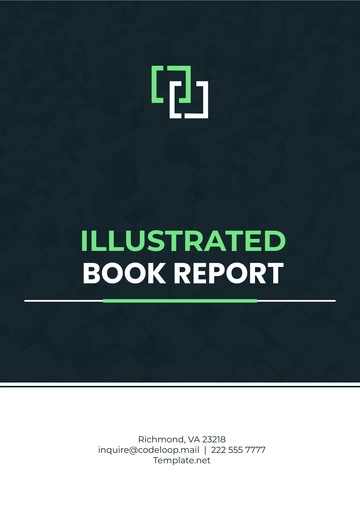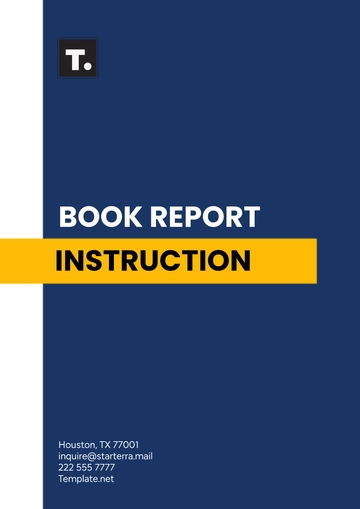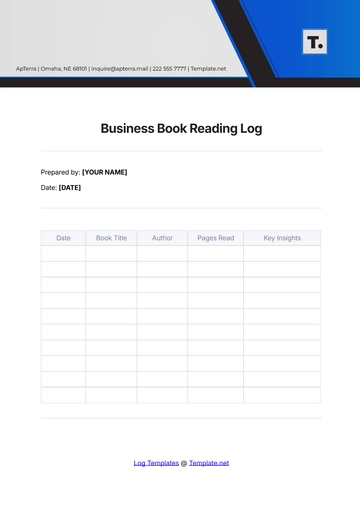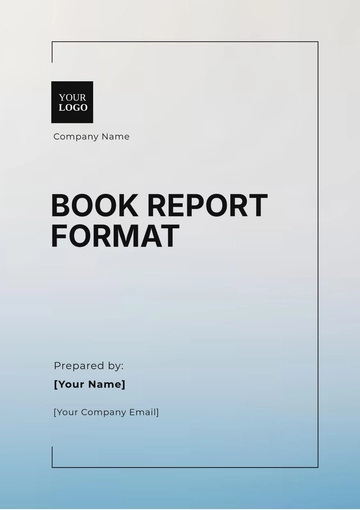Free Book Chapter Report

I. Chapter Information
Chapter Title: [CHAPTER TITLE ]
Book Title: [BOOK TITLE ]
Author(s): [YOUR NAME]
Date Published: [PUBLICATION DATE ]
II. Introduction
[CHAPTER TITLE] is a critical examination and analysis dedicated to understanding the multifaceted aspects presented in [BOOK TITLE] by [BOOK AUTHOR]. This chapter aims to delve into the thematic elements, character developments, and narrative techniques utilized throughout the specified book chapter.
This report not only reflects on the content itself but also contextualizes the implications of the book's themes within modern academic and practical frameworks. By examining the chapter, [CHAPTER OF THE BOOK], insights can be garnered concerning broader societal and cultural discourses.
III. Chapter Summary
The focused chapter, [CHAPTER OF THE BOOK], presents essential topics such as [LIST MAIN TOPICS]. A succinct summary is crucial to encapsulate the key points discussed. The chapter starts with [BRIEF DESCRIPTION OF HOW THE CHAPTER STARTS] and concludes with [BRIEF DESCRIPTION OF HOW THE CHAPTER ENDS].
[CHAPTER TITLE] further examines the critical events such as [SPECIFIC EVENTS OR TURNING POINTS], which play a pivotal role in the narrative progression. The characters involved, primarily [MAIN CHARACTERS], demonstrate significant development which is crucial for the thematic coherence of the book.
IV. Themes and Analysis
The chapter thoroughly explores various recurring themes like [THEMES]. Each theme is analyzed for its relevance to the storyline and its reflection on real-world issues. For instance, the theme of [EXAMPLE THEME] is particularly pertinent because it mirrors [REAL-WORLD CORRELATION].
In addition, the narrative techniques such as [NARRATIVE TECHNIQUES USED] help in advancing the story's depth and engaging the reader more effectively. For example, the use of [TECHNIQUE] effectively enhances the reader's understanding of [SPECIFIC ASPECT].
V. Character Development
The development seen in [MAIN CHARACTER NAME] over the span of [CHAPTER TITLE] can be associated with [CHARACTER TRAITS/CHANGES]. This not only adds depth to the character but also supports the thematic structure of the narrative.
Each character's motivation is intricately linked with the broader story arc. For instance, [CHARACTER NAME]’s decision to [DECISION] is a turning point that affects the subsequent chapters and the overall outcome.
VI. Critical Reflection
This chapter assessment illuminates both strengths and weaknesses within [BOOK TITLE]. The robust discussion and analysis aim to provide a balanced perspective, acknowledging the author's [YOUR SKILLS] while also highlighting areas that could be explored further or perceived differently.
In conclusion, the exploration of [CHAPTER TITLE] provides not only an appreciation for [BOOK AUTHOR]'s literary craftsmanship but also stimulates critical thinking concerning the themes and methods employed.
- 100% Customizable, free editor
- Access 1 Million+ Templates, photo’s & graphics
- Download or share as a template
- Click and replace photos, graphics, text, backgrounds
- Resize, crop, AI write & more
- Access advanced editor
Discover the ultimate Book Chapter Report Template at Template.net! This meticulously crafted resource offers unparalleled convenience, boasting editable and customizable features. Seamlessly tailor your reports to perfection using our AI Editor Tool. Elevate your presentations effortlessly with this versatile solution. Unlock boundless creativity and efficiency today!






